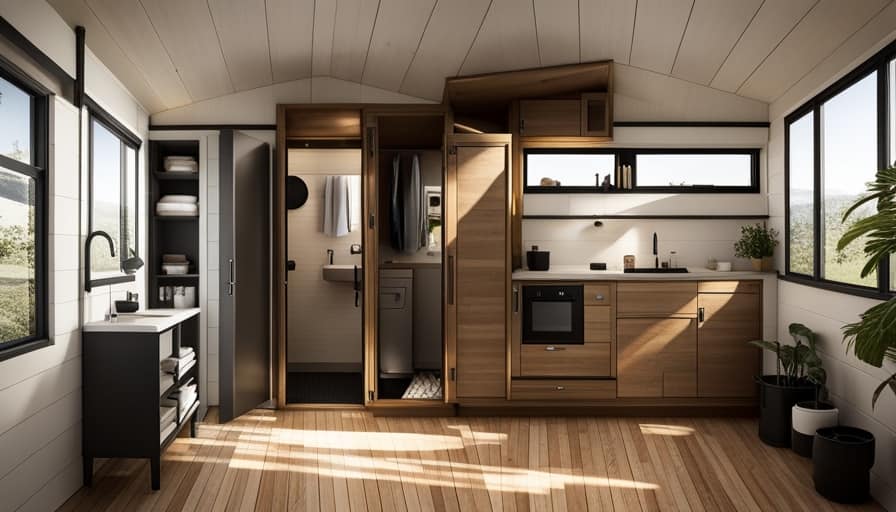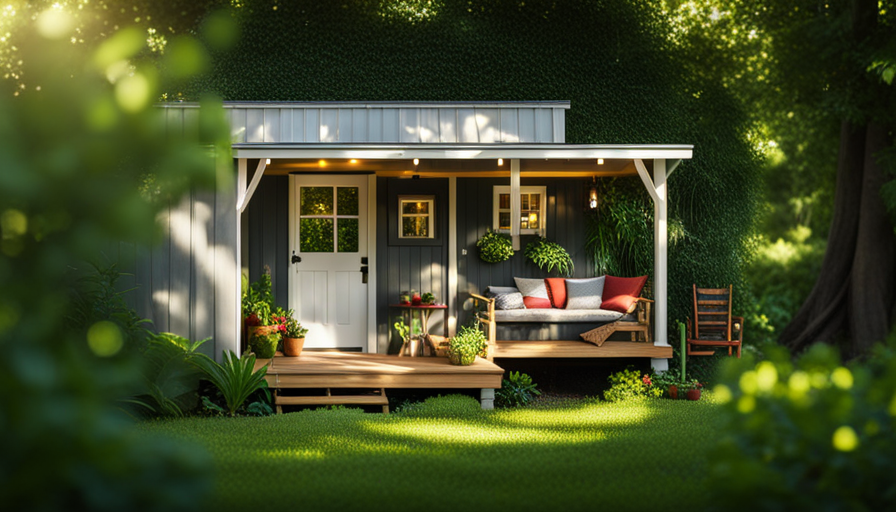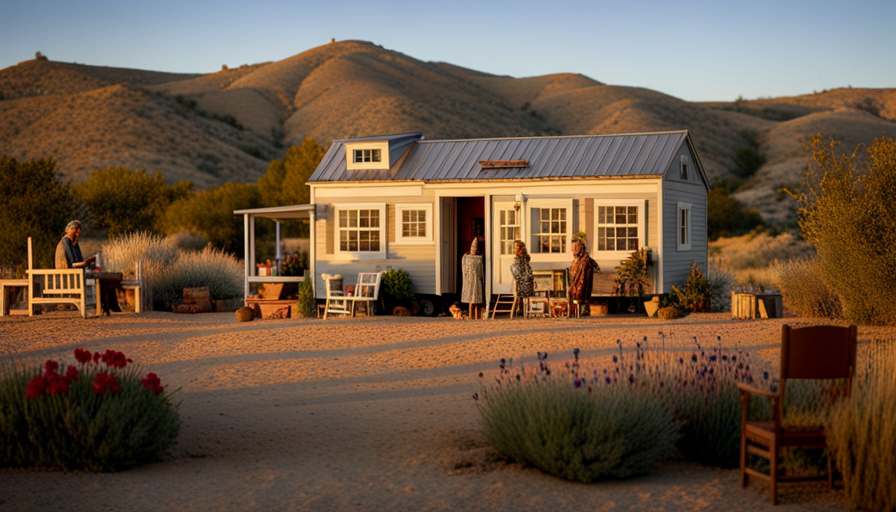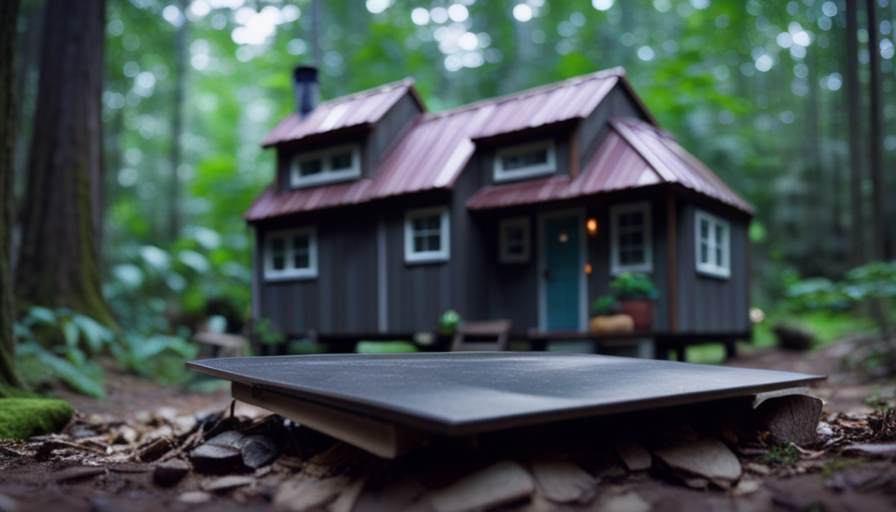I have always desired to own a small, comfortable home, but typical financing solutions appeared unattainable. That’s when I found out about the concept of tiny houses. These efficient, eco-friendly residences provide a budget-friendly option to conventional homes.
But how do I finance a tiny house? In this article, I’ll guide you through the various financing options and share practical tips for saving and budgeting. Whether you’re a minimalist enthusiast or simply looking to downsize, this article is here to help you make your tiny house dreams a reality.
Key Takeaways
- Financing options for tiny houses include personal loans, RV loans, and crowdfunding platforms.
- Traditional financing options such as bank loans and personal loans from banks or online lenders are available for tiny house financing.
- Alternative financing options like crowdfunding and personal loans can be explored, but they have their own pros and cons.
- Saving and budgeting for a tiny house is important, and options like obtaining a loan specifically designed for tiny house financing or exploring crowdfunding platforms can be considered.
Understanding the Cost of a Tiny House
I can’t believe how much it costs to build a tiny house. Understanding the financing process and the factors affecting the cost of a tiny house is crucial before embarking on this journey.
Firstly, let’s talk about the financing process. Many people choose to finance their tiny houses through personal loans, RV loans, or even crowdfunding platforms. It’s important to research and compare interest rates and terms to find the best option for your financial situation.

Now, let’s discuss the factors that affect the cost of a tiny house. Size, materials, and customization are the main factors. The larger the size, the more materials and labor will be required, thus increasing the cost. Additionally, using high-quality and sustainable materials can also raise the price. Lastly, customization, such as unique designs or added features, will add to the overall cost.
Exploring Traditional Financing Options
When exploring financing options for a tiny house, it’s important to consider traditional routes such as bank loans or credit unions. These options can provide the necessary funds to purchase or build your dream tiny house. Here are some key points to keep in mind when considering traditional financing options:
-
Traditional bank loans: Many banks offer loans specifically designed for home construction or purchases, which can be used for a tiny house.
-
Personal loans: If you don’t qualify for a traditional bank loan, personal loans from banks or online lenders can be a viable alternative.

-
Interest rates: Traditional financing options may offer competitive interest rates, depending on your creditworthiness and other factors.
-
Repayment terms: It’s important to carefully review the repayment terms of any loan you consider, including the length of the loan and monthly payment amounts.
-
Eligibility requirements: Different lenders have different eligibility criteria, so it’s important to research and compare options to find the best fit for your needs.
Exploring traditional financing options can provide a solid foundation for financing your tiny house.

However, there are also alternative financing options worth considering, which will be explored in the next section.
Exploring Alternative Financing Options
One option to consider when exploring alternative financing options for a tiny house is crowdfunding. Crowdfunding is a method of raising funds by pooling small amounts of money from a large number of people. It can be a viable option for financing a tiny house as it allows individuals to contribute towards the project. Another alternative financing option is personal loans. Personal loans are loans that are not secured by any collateral, such as a house or car. They can be used to finance a variety of expenses, including the construction or purchase of a tiny house. When considering personal loans, it is important to shop around for the best interest rates and terms. Below is a table comparing crowdfunding and personal loans as alternative financing options for a tiny house:
| Financing Option | Pros | Cons |
|---|---|---|
| Crowdfunding | – Can raise funds from others | – No guarantee of reaching goal |
| Personal Loans | – Can be used for any purpose | – May require good credit score |
Both crowdfunding and personal loans can provide alternative financing options for a tiny house. It is important to carefully consider the pros and cons of each option before making a decision.
Tips for Saving and Budgeting for a Tiny House
Saving and budgeting for a tiny house involves prioritizing expenses and finding ways to cut costs. Here are some practical tips to help you save and budget effectively:

- Create a detailed budget: Start by listing all your expenses and income to determine how much you can allocate towards your tiny house.
- Cut unnecessary expenses: Identify areas where you can reduce spending, such as eating out less or canceling unused subscriptions.
- Save consistently: Set aside a certain amount of money each month specifically for your tiny house fund.
- Consider a tiny house loan: Research options for obtaining a loan specifically designed for tiny house financing.
- Explore crowdfunding options: Crowdfunding platforms can help you raise funds for your tiny house project by reaching out to a wider network of supporters.
By implementing these tips, you can make steady progress towards your goal of owning a tiny house.
Now, let’s explore some resources for grants and financial assistance to further support your journey.
Resources for Grants and Financial Assistance
I can explore various resources for grants and financial assistance to help me finance my tiny house. Grants are a great option to consider, as they provide funding that doesn’t need to be repaid.
There are several organizations and programs that offer grants specifically for individuals looking to build or purchase a tiny house. One such resource is the Tiny House Fund, which provides grants to low-income individuals and families for the construction of tiny houses.

Another option is the Housing Assistance Council, which offers grants to organizations that provide housing assistance to low-income individuals.
It’s important to note that grants availability may vary depending on location and eligibility criteria. Therefore, it’s crucial to research and identify grants that align with your specific needs and circumstances.
Frequently Asked Questions
Can I Use a Personal Loan to Finance a Tiny House?
Yes, you can use a personal loan to finance a tiny house. It’s one of the alternative financing options available. However, make sure to research interest rates and terms to find the best option for you.
Are There Any Specific Qualifications I Need to Meet in Order to Obtain a Traditional Mortgage for a Tiny House?
To obtain a traditional mortgage for a tiny house, you need to meet certain qualifying criteria. The application process requires providing necessary documentation, such as income verification and credit history.

Are There Any Tax Benefits or Incentives Available for Financing a Tiny House?
Tax benefits and incentives can be available when financing a tiny house. It’s important to research and consult with a tax professional to understand the specific benefits that may apply to your situation.
What Are the Advantages and Disadvantages of Using Alternative Financing Options for a Tiny House?
Using alternative financing options for a tiny house has advantages, such as flexibility and lower interest rates, but also disadvantages, like stricter eligibility criteria. It’s important to weigh the pros and cons before deciding.
Are There Any Specific Tips or Strategies for Saving and Budgeting for a Tiny House That Differ From Traditional Homeownership?
When it comes to saving and budgeting for a tiny house, there are some specific tips and strategies that differ from traditional homeownership. Some budgeting strategies include cutting expenses, tracking spending, and setting realistic goals. Additionally, saving techniques like automating savings and finding ways to earn extra income can help you reach your financial goals faster.
Conclusion
In conclusion, financing a tiny house may seem daunting, but with careful planning and research, it can be achievable.

By understanding the costs involved, exploring traditional and alternative financing options, and implementing smart saving and budgeting strategies, you can make your dream of owning a tiny house a reality.
Remember, there are also resources available such as grants and financial assistance programs that can provide additional support.
So don’t let financial barriers hold you back, start exploring your options today and embark on your tiny house journey.
I’m Theodore, and I love tiny houses. In fact, I’m the author of Tiny House 43, a book about tiny houses that are also tree houses. I think they’re magical places where imaginations can run wild and adventures are just waiting to happen.
While tree houses are often associated with childhood, they can be the perfect adult retreat. They offer a cozy space to relax and unwind, surrounded by nature. And since they’re typically built on stilts or raised platforms, they offer stunning views that traditional homes simply can’t match.
If you’re looking for a unique and romantic getaway, a tree house tiny house might just be the perfect option.
















